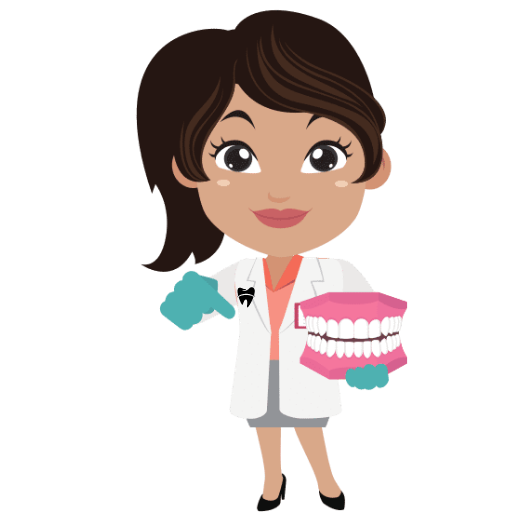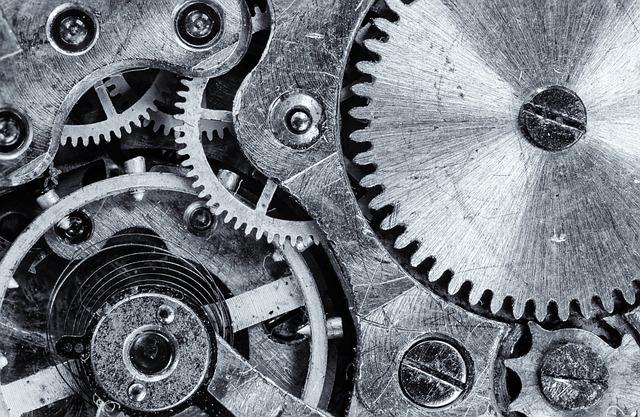Discover the truth behind gum recession and bruxism as we delve into the realities that connect these dental issues. Prepare to be enlightened!
1. Understanding Gum Recession: A Common Dental Dilemma
Gum recession is a dental condition that affects many people. It occurs when the gum tissues surrounding the teeth gradually wear away or recede, exposing the root surfaces of the teeth. This can lead to various oral health problems if left untreated. Understanding the causes, symptoms, and available treatment options for gum recession is crucial for maintaining optimal dental health.
Causes of Gum Recession:
- Poor oral hygiene habits, such as inadequate brushing or flossing
- Aggressive brushing technique
- Gum disease, also known as periodontal disease
- Genetic predisposition
- Teeth grinding/clenching
- Smoking/tobacco use
Signs and Symptoms:
- Exposed tooth roots
- Longer-looking teeth
- Sensitive teeth
- Bleeding or swollen gums
- Persistent bad breath
- Loose teeth
Treatment Options:
- Gum graft surgery
- Scaling and root planing
- Antibiotics
- Flap surgery
- Pinhole surgical technique
- Orthodontic treatment
2. Bruxism Unveiled: Exploring the Link to Receding Gums
Bruxism, commonly known as teeth grinding, is a condition that affects many people without them even realizing it. This unconscious habit can wreak havoc on your oral health, with one of the most concerning consequences being receding gums. Let’s take a closer look at the link between bruxism and receding gums:
1. Increased Pressure: When you grind your teeth, excessive force is placed on your gums, leading to their gradual recession. The constant grinding motion puts undue stress on the gum line, causing it to pull away from the teeth over time.
2. Inflammation and Gum Damage: Bruxism can result in gum inflammation and damage. The repetitive grinding action irritates the gum tissue, making it more susceptible to recession. In severe cases, the gums may become swollen, tender, or even bleed.
3. Tooth Misalignment: Bruxism often accompanies misaligned teeth or an improper bite. As the teeth don’t fit together correctly, grinding becomes more likely. This irregular motion strains the gums and contributes to their recession.
Addressing bruxism is crucial to prevent further damage to your gums and teeth. Effective treatment options include wearing a nightguard during sleep to protect your teeth, stress management techniques to reduce teeth grinding, and seeking orthodontic treatment if misaligned teeth are the underlying cause.
3. The Mechanism at Play: How Bruxism Impacts Gum Tissue
Bruxism, commonly known as teeth grinding, is a condition that affects both children and adults. While it may seem harmless, bruxism can have detrimental effects on the oral health, specifically on the gum tissue. Understanding the mechanism behind how bruxism impacts gum tissue is crucial in addressing and managing this condition effectively.
Here’s a breakdown of the key factors involved:
- Constant Pressure: Bruxism subjects the gums to constant pressure exerted by the excessive force applied during teeth grinding. This relentless pressure can lead to inflammation and damage to the gum tissue over time.
- Microtrauma: The repetitive movement of the teeth against each other can cause small microtraumas on the gum tissue. These microtraumas weaken the gums, making them more susceptible to infection and periodontal diseases.
- Reduced Blood Flow: Bruxism can restrict blood flow to the gum tissue due to the prolonged compression. Without adequate blood supply, the gum tissue becomes vulnerable, compromising its ability to heal and regenerate.
To mitigate the impact of bruxism on gum tissue, it is essential to develop strategies aimed at both preventing teeth grinding and protecting the gum tissue. Seeking professional guidance from a dentist, utilizing custom-fit mouthguards or splints, and incorporating stress-reducing techniques into your daily routine are all effective measures worth considering.
4. Unmasking the Culprit: Identifying the True Cause of Receding Gums
Receding gums can be a concerning dental issue, as they not only affect the aesthetics of your smile but can also lead to tooth sensitivity and even tooth loss. Identifying the true cause of receding gums is crucial to effectively addressing this problem. Here are some common culprits behind receding gums that you should be aware of:
- Poor oral hygiene: Inadequate brushing, flossing, and regular dental cleanings can allow plaque and tartar buildup, leading to gum recession over time.
- Gum disease: The leading cause of gum recession is gum disease, also known as periodontal disease. This infection can attack the gums and supporting structures of your teeth, causing them to recede.
- Aggressive brushing: Brushing your teeth too hard or using a toothbrush with hard bristles can weaken the gum tissue and cause it to recede.
- Genetics: Some individuals have a genetic predisposition to developing gum recession. If your parents experienced receding gums, you may be more prone to it as well.
- Smoking: Regular smoking leads to reduced blood flow and oxygen supply to the gums, increasing the risk of gum recession.
- Misaligned teeth: Teeth that are not properly aligned or have been lost can exert excessive pressure on the gums, leading to gum recession.
- Hormonal changes: Hormonal fluctuations during puberty, pregnancy, and menopause can make the gums more sensitive and susceptible to receding.
It is important to consult with a dental professional if you notice any signs of gum recession. They can determine the underlying cause and provide appropriate treatment options. Taking preventive measures, such as maintaining good oral hygiene habits and addressing any dental issues promptly, can help prevent or minimize the risk of receding gums.
5. The Widespread Impact: Bruxism’s Role in Gum Recession
Bruxism, commonly known as teeth grinding or jaw clenching, has far-reaching consequences beyond dental damage. One significant impact of bruxism is its role in gum recession. Although bruxism primarily affects the teeth, the excessive pressure exerted during grinding can lead to gum recession over time if left untreated.
Gum recession occurs when the gum tissue surrounding the teeth pulls away from the tooth surface, exposing the tooth’s root. This not only compromises the appearance of the smile but also poses oral health risks. The connection between bruxism and gum recession lies in the constant friction and pressure applied to the gums during grinding, which gradually wears away the gum tissue.
When bruxism persists, it can irritate and inflame the gums, making them recede further. As the gums recede, the exposed tooth roots become vulnerable to plaque buildup, tooth decay, and even tooth loss. Additionally, gum recession can cause tooth sensitivity and lead to other dental complications such as root caries or bone loss. Treating bruxism promptly and adopting preventive measures can help mitigate the risk of gum recession and its consequences.
- Preventing gum recession: Adopting stress-management techniques, wearing a mouthguard during sleep, and seeking treatment for bruxism are essential in preventing gum recession.
- Professional intervention: A dentist can diagnose bruxism and provide custom mouthguards to protect the teeth and gums during sleep. Treating underlying causes such as misaligned teeth or stress-related habits can also prevent gum recession.
- Maintaining good oral hygiene: Regularly brushing the teeth with a soft-bristled toothbrush, using fluoride toothpaste, and flossing can help prevent gum disease and protect against gum recession.
- Regular dental visits: Scheduling routine dental check-ups allows dentists to detect early signs of gum recession and provide appropriate treatment before the condition worsens.
6. Connecting the Dots: Exposing the Relationship between Teeth Grinding and Gum Loss
Teeth grinding, or bruxism, is a common condition that affects many individuals without them even realizing it. This unconscious habit involves gnashing or clenching the teeth, often occurring during sleep or times of stress. While teeth grinding can lead to various dental problems, one significant concern is the potential loss of gum tissue. By digging deeper into this relationship, we can better understand the impact of teeth grinding on gum health.
1. Increased pressure on gums: The intense pressure exerted on the teeth during grinding can also impact the surrounding gum tissue. As the upper and lower teeth rub against each other forcefully, the gums may also bear the brunt of this force. Over time, this can lead to gum recession, where the gums recede or pull away from the teeth. The exposed tooth roots can become sensitive, creating discomfort and making the teeth vulnerable to decay.
2. Inflammation and gum disease: The abrasive nature of teeth grinding can cause irritation and inflammation in the gums. This chronic inflammation can contribute to the development of gum disease, also known as periodontal disease. This condition can lead to gum bleeding, swelling, and even tooth loss if left untreated. Identifying and addressing the connection between teeth grinding and gum loss is crucial for maintaining optimal oral health.
7. Debunking Myths: Separating Fact from Fiction on Bruxism and Gum Recession
Bruxism and gum recession are two dental conditions that are often misunderstood. In this section, we will debunk common myths and provide accurate information to help you separate fact from fiction.
Myth 1: Bruxism only affects teeth. Contrary to popular belief, bruxism doesn’t only impact the teeth. It can also affect the surrounding structures, including the gums. The excessive grinding and clenching motion can place excessive pressure on the gums, leading to gum recession. This can result in sensitive teeth, increased risk of tooth decay, and compromised oral health.
Myth 2: Gum recession is solely caused by brushing too hard. While aggressive brushing can contribute to gum recession, it is not the sole cause. Bruxism, as mentioned earlier, can also play a significant role. Additionally, factors such as gum disease, hormonal changes, tobacco use, and genetics can contribute to gum recession. It’s essential to understand that proper oral hygiene practices, including gentle brushing techniques, regular dental visits, and addressing bruxism, are crucial in preventing and managing gum recession.
Myth 3: Gum recession is irreversible. Although gum recession can be a concerning issue, it doesn’t necessarily mean it’s irreparable. Gum recession treatment options are available, depending on the cause and severity. These can range from non-surgical approaches such as improving oral hygiene habits to surgical interventions like gum grafting. Seeking professional dental advice and addressing the underlying causes are the first steps towards effectively managing and potentially reversing gum recession.
8. Fighting Back: Strategies to Prevent and Address Gum Recession caused by Bruxism
Gum recession caused by bruxism, a condition characterized by teeth grinding and clenching, can be a frustrating and uncomfortable problem. However, there are strategies you can implement to prevent and address this issue. By taking the following steps, you can protect your gums and maintain optimal oral health:
- Wear a nightguard: Using a custom-fitted nightguard while sleeping can provide a cushioning effect on your teeth, reducing the pressure and friction caused by bruxism. This helps minimize the risk of gum recession.
- Practice stress management: Since stress can contribute to teeth grinding, it’s important to find healthy ways to manage stress levels. Engaging in activities such as exercise, meditation, or therapy can help alleviate stress and reduce the likelihood of bruxism.
- Avoid hard and chewy foods: Consuming food that requires excessive force to chew can strain your teeth and gums, exacerbating gum recession. Opt for softer foods and try to cut down on foods such as ice, hard candies, and tough meats.
- Maintain proper oral hygiene: Brushing your teeth gently with a soft-bristled brush and using a fluoride toothpaste can help keep your gums healthy. Don’t forget to floss daily to remove plaque and food particles between your teeth, reducing the risk of gum disease and further gum recession.
By implementing these strategies, you can take control of gum recession caused by bruxism and maintain a healthy smile. Remember, it’s essential to consult with a dental professional if you experience persistent gum recession or bruxism symptoms for a comprehensive evaluation and personalized advice.
9. Seeking Treatment: Dental Options for Combating Bruxism and Receding Gums
When it comes to treating bruxism (teeth grinding) and receding gums, several dental options are available to combat these issues and provide relief. It is important to address these conditions promptly, as they can lead to more severe dental problems if left untreated. Below, we’ll explore some of the treatment options for both bruxism and receding gums:
Treatment Options for Bruxism:
- Custom Night Guard: A custom night guard is a popular treatment for bruxism. It is a specially designed oral appliance that fits over your teeth to protect them from grinding and clenching during sleep. These guards can help alleviate pain and prevent further damage caused by bruxism.
- Stress Management Techniques: Since stress is often a contributing factor to bruxism, learning and implementing stress management techniques can be helpful. Techniques such as meditation, exercise, and relaxation exercises can help reduce stress levels, thereby reducing teeth grinding.
- Dental Corrections: In some cases, dental corrections may be necessary to treat bruxism. This can include tooth realignment, the replacement of missing teeth, or the use of orthodontic treatments to address an improper bite, all of which can reduce teeth grinding.
Treatment Options for Receding Gums:
- Scaling and Root Planing: This deep cleaning procedure is commonly used to treat early stages of gum disease, which often contributes to receding gums. It involves removing plaque and tartar from the teeth, along with smoothing the tooth root surfaces to promote gum tissue reattachment.
- Gum Grafting: In more severe cases, gum grafting may be necessary. This surgical procedure involves taking gum tissue from another area of your mouth and transplanting it to the area with receding gums. Gum grafting can help cover exposed tooth roots and prevent further gum recession.
- Good Oral Hygiene Practices: Practicing good oral hygiene is crucial in preventing and treating receding gums. This includes brushing your teeth twice a day with a soft-bristled brush, flossing daily, using antimicrobial mouthwashes, and visiting your dentist regularly for professional cleanings and check-ups.
If you are experiencing symptoms of bruxism or receding gums, it is essential to consult with your dentist. They will be able to evaluate your condition and recommend the most suitable treatment option for your specific situation. Remember, addressing these issues early can help preserve your oral health and prevent more significant problems down the line.
10. Proactive Dental Care: Maintaining Healthy Gums despite Bruxism Challenges
One of the challenges faced by individuals with bruxism is maintaining healthy gums. Bruxism refers to the habit of grinding or clenching teeth, often during sleep, which can lead to various oral health problems. However, by adopting proactive dental care strategies, it is possible to minimize the impact of bruxism on gum health. Here are some important tips to keep your gums healthy:
- Regular dental check-ups: Schedule routine visits to your dentist to monitor the condition of your gums. Dental professionals can identify any signs of gum disease or damage caused by bruxism early on and provide appropriate treatment.
- Maintain good oral hygiene: Brushing your teeth at least twice a day with a soft-bristled toothbrush and fluoride toothpaste is essential. Incorporate gentle circular motions to clean along the gumline and remove any plaque or debris.
- Consider a nightguard: Consult your dentist about using a custom-made nightguard. This specialized mouthguard protects your teeth and reduces the grinding and clenching that can harm both your teeth and gums.
- Practice stress management: Since bruxism can be linked to stress and anxiety, finding effective methods to manage these emotions can contribute to better oral health. Engaging in relaxation techniques such as deep breathing, yoga, or meditation might help reduce bruxism episodes.
By prioritizing proactive dental care, you can maintain healthy gums and minimize the complications associated with bruxism. Incorporate these strategies into your oral hygiene routine and consult with your dentist to ensure a healthy smile for years to come.
In conclusion, bruxism can indeed contribute to gum recession, but it is not the sole cause. Other factors such as poor oral hygiene and genetic predisposition also play a role. Regular dental check-ups, effective oral care, and awareness of the potential effects of teeth grinding are crucial for maintaining healthy gums in the long run.






